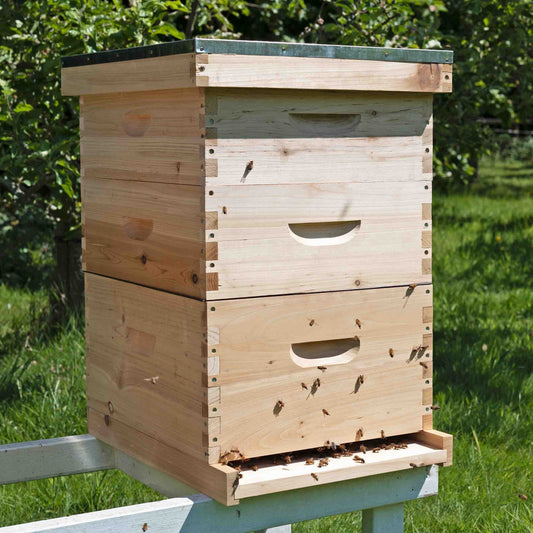
How to Insulate Bee Hives for the Winter UK
There are lots of ways to insulate a beehive for winter. In this article, we'll discuss the best options for getting your hive in the best shape for winter.
1. Insulate the roof of the hive
It's up for contention, but the best results from beekeeping we have seen over the years is where the bees have top insulation.
Think of bees living in a tree cavity, they wouldn't have an empty void above them (a super) they'd have a whole tree.
Following this logic, we cut a sheet of 15mm celuex insulation down to fit into a super and over-winter them with a super ontop for feeding fondant (or an eek).
This provides the best over-wintering success.

2. Wrap the hive in damp course
This is something that we used to do, however we have stopped in recent years. We didn't find much evidence to show that the bees actually survived better.
You can buy a roll of damp course from B&Q or Screwfix and wrap the hive in this. Pinning it down with staples or drawing pins. This provides a wind break to stop wind from entering the hive through gaps in the crown board.
It also provides additional absorption of UV energy from the sun on warmer days; heating the hive. However, this can actually prove to work-counterintuatively as the bees will leave the hive and use more stores (with little forage available in mid-winter UK).

3. Use a Poly hive or Poly nuc
Poly hives are the best solution for keeping hives insulated all year round. This helps bees keep cooler in the summer and warmer in the winter.
Cooler in the summer means fewer calories spent on keeping the hives cold so in tern more honey.
Warmer hives in the winter means a less energy needs to be spent heating a hive, so you'll spend less on feeding them. As a result of this the hives tend to build up better in the spring.



